All Management News
- Research article accepted for IEEE conference IEMTRONICS 2022 June 4, 2022
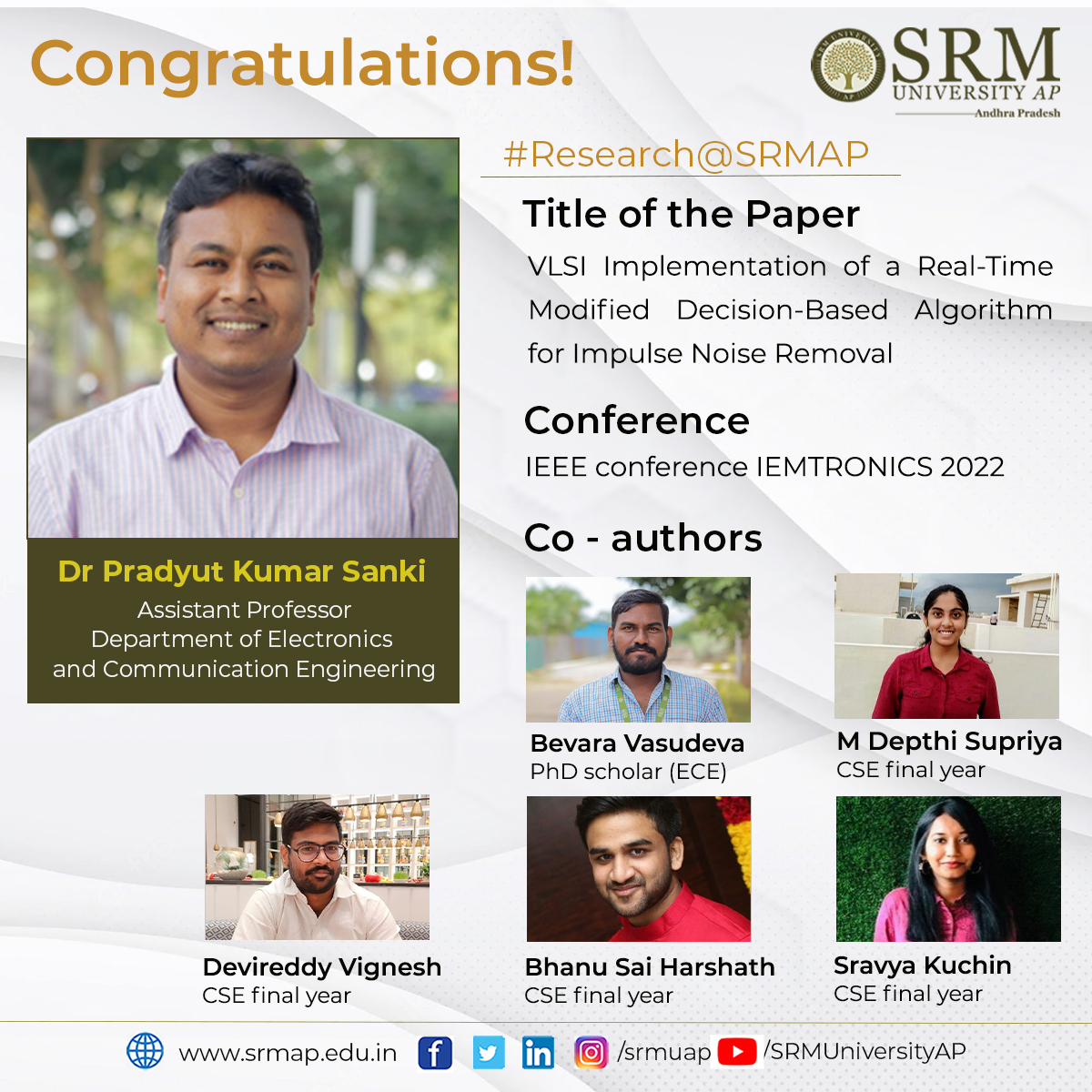
SRM University-AP preserves a research-empowered ecosystem stimulating its faculty and students to roll out original and discerning studies capable of making instrumental contributions aiming the scientific and societal progress. Making strides with impactful research publications and groundbreaking achievements, the institution has carved a niche for itself in the academic milieu. We are glad to present yet another success story of our research community that keeps bringing laurels to the institutions from far and wide.
Dr Pradyut Kumar Sanki and his PhD scholar Bevara Vasudeva, from the Department of Electronics and Communications Engineering, along with a group of Computer Science and Engineering students: Medarametla Depthi Supriya, Devireddy Vignesh, Peram Bhanu Sai Harshath, and Sravya Kuchina have got their paper titled ‘’VLSI Implementation of a Real-Time Modified Decision-Based Algorithm for Impulse Noise Removal’’ accepted in the IEEE conference IEMTRONICS 2022. This publication is a part of the Capstone project contributed by the students.
IEMTRONICS 2022 (International IOT, Electronics and Mechatronics Conference) is an international conclave that aims to bring together scholars from different backgrounds to disseminate inventive ideas in the fields of IOT, Electronics and Mechatronics. The conference will also promote an intense dialogue between academia and industry to bridge the gap between academic research, industry initiatives, and governmental policies. This is fostered by panel discussions, invited talks, and industry exhibits where academia and industry will mutually benefit from each other.
Through the research paper, the team proposes a real-time impulse noise removal (RTINR) algorithm and its hardware architecture for denoising images corrupted with fixed valued impulse noise.
Abstract of the Research
A decision-based algorithm is modified in the proposed RTINR algorithm where the corrupted pixel is first detected and is restored with median or previous pixel value depending on the number of corrupted pixels in the image. The proposed RTINR architecture has been designed to reduce the hardware complexity as it requires 21 comparators, 4 adders, and 2 line buffers which in turn improve the execution time. The proposed architecture results better in qualitative and quantitative performance in comparison to different denoising schemes while evaluated based on the following parameters: PSNR, IEF, MSE, EKI, SSIM, FOM, and visual quality. The proposed architecture has been simulated using the XC7VX330T-FFG1761 VIRTEX7 FPGA device and the reported maximum post place and route frequency is 360.88 MHz. The proposed RTINR architecture is capable of denoising images of size 512 × 512 at 686 frames per second. The architecture has also been synthesized using UMC 90 nm technology where 103 mW power is consumed at a clock frequency of 100 MHz with a gate count of 2.3K (NAND2) including two memory buffers.
Continue reading → - Design methodologies for composite structures in aircraft engines June 3, 2022
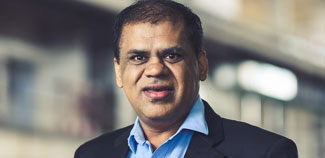 Dr Prakash Jadhav, Professor and Head, Department of Mechanical Engineering at SRM University-AP has published a chapter titled “Design Methodologies for Composite Structures in Aircraft Engines” in the book Advanced composites in aerospace engineering applications, Feb 2022, ISBN 978-3-030-88191-7, Springer.
Dr Prakash Jadhav, Professor and Head, Department of Mechanical Engineering at SRM University-AP has published a chapter titled “Design Methodologies for Composite Structures in Aircraft Engines” in the book Advanced composites in aerospace engineering applications, Feb 2022, ISBN 978-3-030-88191-7, Springer.Abstract of the book chapter
Recently there have been many successful attempts to implement the use of fibre-reinforced composite structures in commercial aircraft engines. The author has been part of these efforts while working in the aviation industry. This article describes these efforts to design, analyze, manufacture, and implement the composite structures inside the low-pressure and low-temperature zones of the engine. Very innovative out-of-the-box design methodologies were used to design these components. These efforts elaborate on the design, optimization, and improvement of the composite fan blade, the composite fan platform, and the composite booster blade inside the engine. It focuses on structural design, aerodynamic efficiency, and specific fuel consumption improvement efforts along with the usual reduction of weight targets. This work successfully demonstrates the systematic steps in the design and implementation like preliminary coupon-level simulations, coupon-level manufacturing, coupon/prototype testing, and final part-level simulations followed by part tests.
The target readers for the book are all engineers, professionals and researchers from the aerospace field. Dr Prakash Jadhav’s future research plan is to continue to develop new methodologies to implement more composites into the aerospace industry. The book chapter will be extremely useful for engineers working on the design of composite structures for aerospace applications.
Continue reading → - An IoT- based smart wallet prototype June 2, 2022
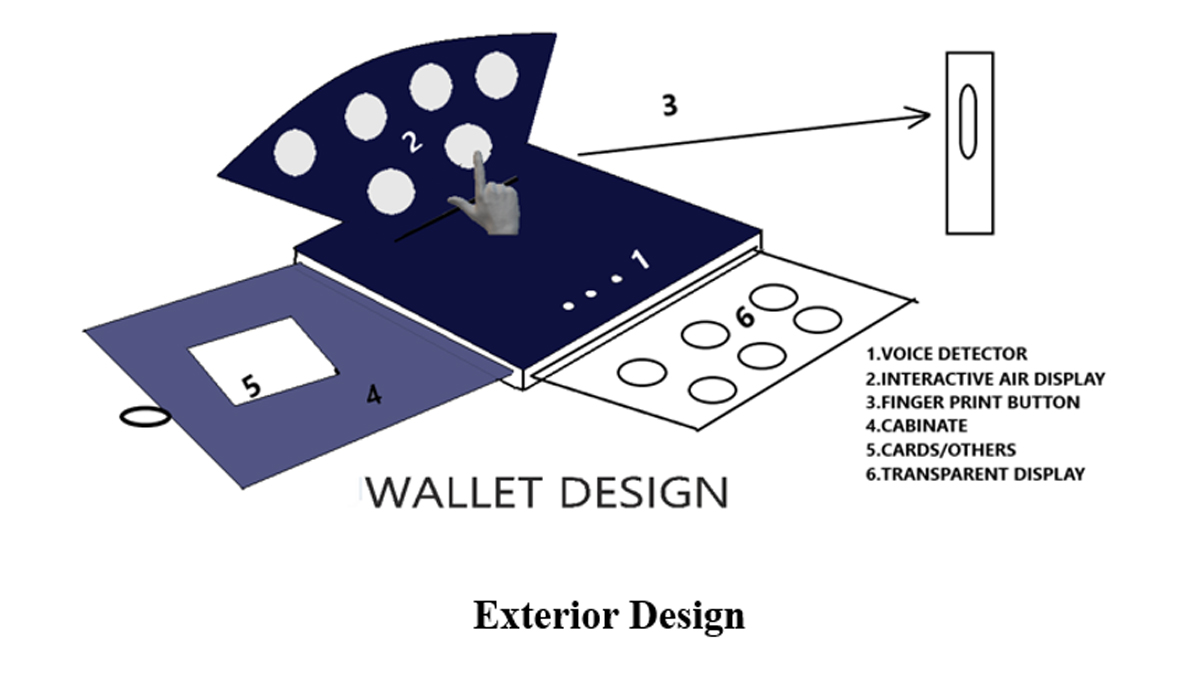 Dr Sonam Maurya, and her research team; Soha Muskaan Sayyad, Trisha Chilukuri, Samah Maaheen Sayyad, and Juhita Naga Priya Velagapudi from the Department of Computer Science and Engineering have innovated a smart wallet model based on IoT and got their patent “Smart Wallet with Enhanced Features for Preventing Misuse and Alarm System for the Same” published. This is a fitting solution to protect against the loss and theft of the wallet.
Dr Sonam Maurya, and her research team; Soha Muskaan Sayyad, Trisha Chilukuri, Samah Maaheen Sayyad, and Juhita Naga Priya Velagapudi from the Department of Computer Science and Engineering have innovated a smart wallet model based on IoT and got their patent “Smart Wallet with Enhanced Features for Preventing Misuse and Alarm System for the Same” published. This is a fitting solution to protect against the loss and theft of the wallet.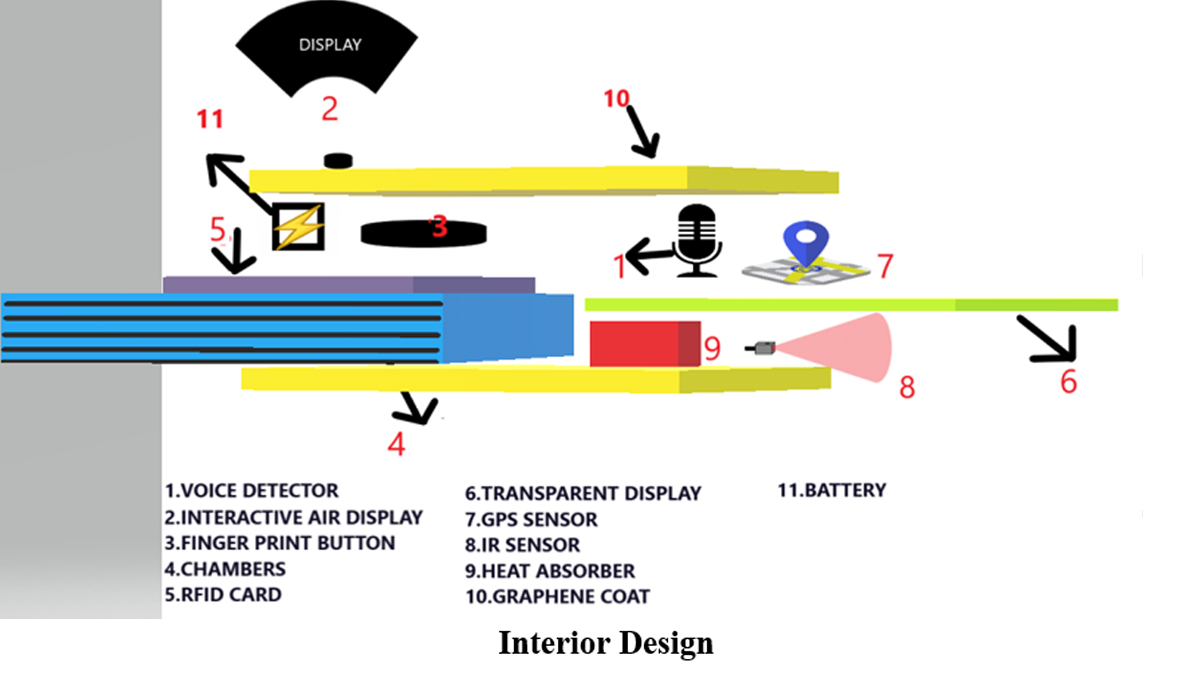 A smart wallet is an excellent technology to safeguard your credit and debit cards. Wallets these days are getting smarter with the latest technologies induced to monitor its presence. The proposed IoT- based wallet model is more smart, intelligent, secure, and safe which encompasses the best use of the latest IoT technologies in our pocket. The prototype consists of fingerprinting access technology, Augmented Reality (AR) navigation, Interactive Air Display (IAD)/ Transparent Display (TD), Voice control mechanism, Emergency alerts, RFID features, and many more. The smart wallet is designed to overcome the shortcomings of the regular wallet types.
A smart wallet is an excellent technology to safeguard your credit and debit cards. Wallets these days are getting smarter with the latest technologies induced to monitor its presence. The proposed IoT- based wallet model is more smart, intelligent, secure, and safe which encompasses the best use of the latest IoT technologies in our pocket. The prototype consists of fingerprinting access technology, Augmented Reality (AR) navigation, Interactive Air Display (IAD)/ Transparent Display (TD), Voice control mechanism, Emergency alerts, RFID features, and many more. The smart wallet is designed to overcome the shortcomings of the regular wallet types.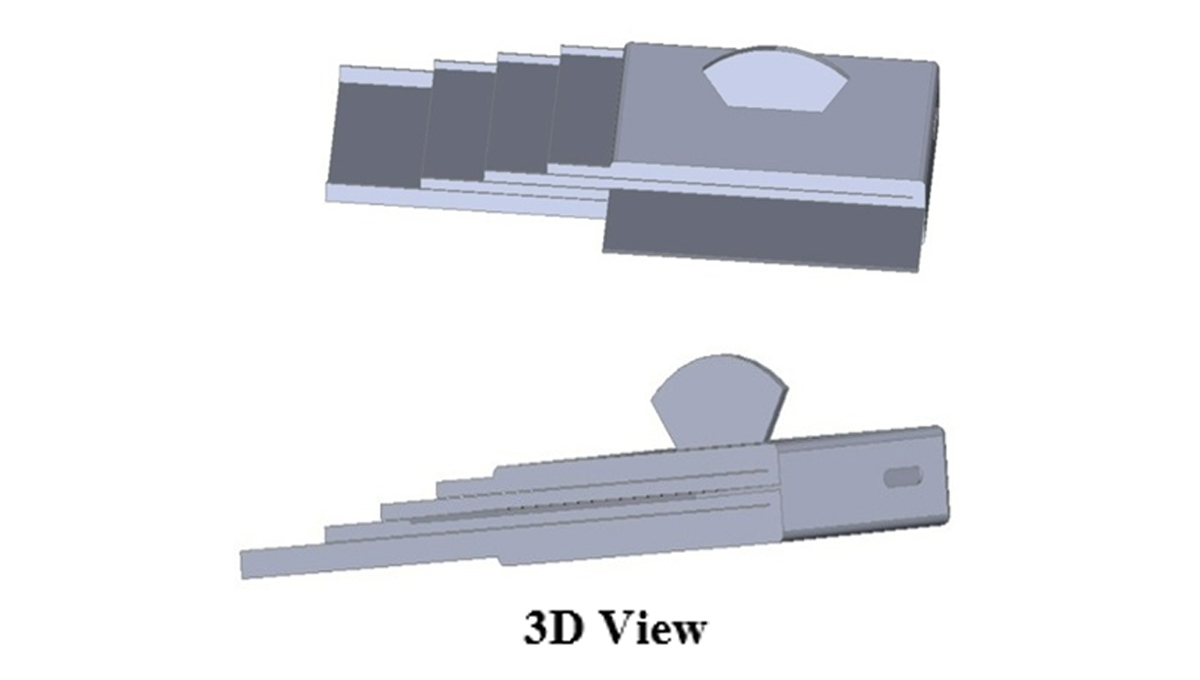 The new technology of AR makes the tracking of the wallet easier with a graphical pathway. And the voice control functionalities help the user to make the process easier in comparison to manual opening. IAD/ TD is used to control the mechanisms like opening the card or money case. To keep the data more secure from hackers, an RFID technology-enabled card is also embedded in the wallet. The strong Graphene outer covering is used to make the materials inside more flexible and safer. Besides, there is an emergency voice control mechanism that takes the instruction from the user and makes the surroundings alert by sending an alert message to the emergency contacts. And the cash counting facility in the wallet to keep track of the cash makes it a wholesome package of digital innovation.
The new technology of AR makes the tracking of the wallet easier with a graphical pathway. And the voice control functionalities help the user to make the process easier in comparison to manual opening. IAD/ TD is used to control the mechanisms like opening the card or money case. To keep the data more secure from hackers, an RFID technology-enabled card is also embedded in the wallet. The strong Graphene outer covering is used to make the materials inside more flexible and safer. Besides, there is an emergency voice control mechanism that takes the instruction from the user and makes the surroundings alert by sending an alert message to the emergency contacts. And the cash counting facility in the wallet to keep track of the cash makes it a wholesome package of digital innovation.The social implications of this smart wallet are:
• Enhanced features for preventing wallet misuse
• Alarm system to help in emergencies and threatening situations
• Best use of IoT technology in a user-friendly way
• Enabled with Wallet/ Card missing notifications
• Eco-friendly charging mechanism
With this innovation, the research team aims to bring technology to its fullest use to make significant transformations in the everyday life of society.
Continue reading → - Reconceiving the building blocks of the Universe June 2, 2022
The research at the Department of Physics is currently focusing on developing new theoretical frameworks to revamp the fundamental concepts that describe the origin of the universe. Assistant Professor Dr Amit Chakraborty has published a paper titled Revisiting Jet Clustering Algorithms for New Higgs Boson Searches in the Hadronic Final States in the European Physical Journal C, with an Impact Factor of 4.59.
Abstract
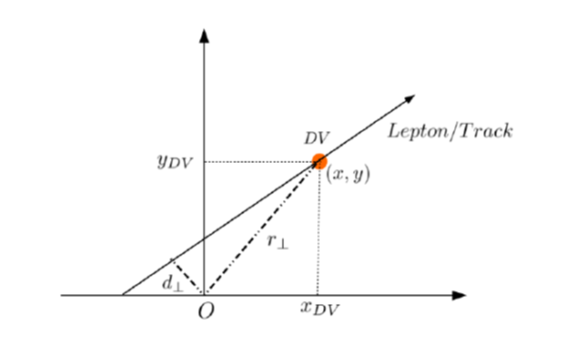 Displaced signatures originating from the pair production of a supersymmetric particle, called sneutrino, at the Large Hadron Collider (LHC) are studied. The theoretical model considered in this work is the Next-to-Minimal Supersymmetric Standard Model supplemented with right-handed neutrinos triggering a Type-I seesaw mechanism. The research has shown how such signatures can be established through a heavy Higgs portal when the sneutrinos are decaying to charged leptons and charginos giving rise to further leptons or hadrons. The research also illustrated how the Yukawa parameters of neutrinos can be extracted by measuring the lifetime of the sneutrino from the displaced vertices, thereby characterising the dynamics of the underlying mechanism of neutrino mass generation.
Displaced signatures originating from the pair production of a supersymmetric particle, called sneutrino, at the Large Hadron Collider (LHC) are studied. The theoretical model considered in this work is the Next-to-Minimal Supersymmetric Standard Model supplemented with right-handed neutrinos triggering a Type-I seesaw mechanism. The research has shown how such signatures can be established through a heavy Higgs portal when the sneutrinos are decaying to charged leptons and charginos giving rise to further leptons or hadrons. The research also illustrated how the Yukawa parameters of neutrinos can be extracted by measuring the lifetime of the sneutrino from the displaced vertices, thereby characterising the dynamics of the underlying mechanism of neutrino mass generation.Explanation of the research
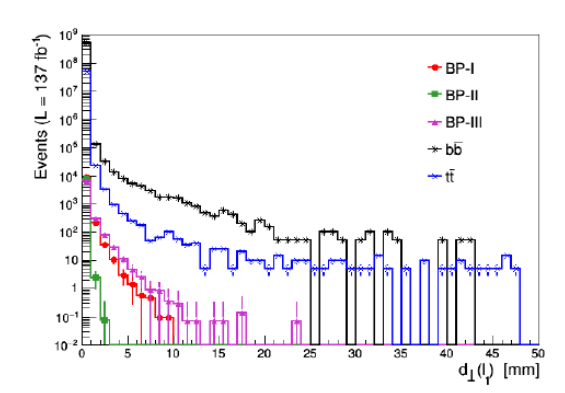 The Standard Model of Particle Physics is currently the remarkably successful theory to describe the basic building blocks of the universe and their interactions with the three fundamental forces of nature. Despite its success at explaining the universe, the Standard Model does have several limitations. For example, how neutrinos get their mass, why the mass spectrum of the different elements of SM fermions, namely quarks and leptons, are so hierarchical, why the Higgs boson mass is so low, etc. The primary research is to understand these issues and then propose theoretical models which circumvent these shortcomings of SM and provide signatures that can be tested in the ongoing or future proposed experiments.
The Standard Model of Particle Physics is currently the remarkably successful theory to describe the basic building blocks of the universe and their interactions with the three fundamental forces of nature. Despite its success at explaining the universe, the Standard Model does have several limitations. For example, how neutrinos get their mass, why the mass spectrum of the different elements of SM fermions, namely quarks and leptons, are so hierarchical, why the Higgs boson mass is so low, etc. The primary research is to understand these issues and then propose theoretical models which circumvent these shortcomings of SM and provide signatures that can be tested in the ongoing or future proposed experiments.For this research project, Dr Amit Chakraborty have collaborated with Particle Physics Department, STFC Rutherford Appleton Laboratory, UK and School of Physics and Astronomy, University of Southampton, UK. His broad research interest is to perform theoretical studies of physics beyond the Standard Model (BSM) in particular, collider search strategies and prospects of different BSM models at the Large Hadron Collider (LHC) and future proposed collider experiments. He aims to build new theoretical models, develop new techniques/tools, and devise new search strategies to improve our knowledge of the standard model as well as BSM physics processes.
Dr Amit Chakraborty’s future research topics include Higgs Boson Physics and Beyond Standard Model Physics Phenomenology, Dark Matter at the Colliders, Interpretable Machine Learning techniques in BSM Physics, and Ultra-light particles and Physics Beyond the Colliders.
Continue reading → - Gather around! Let’s undo the damage we caused! June 1, 2022
“The greatest threat to our planet is the belief that someone else will save it” – Robert Swan
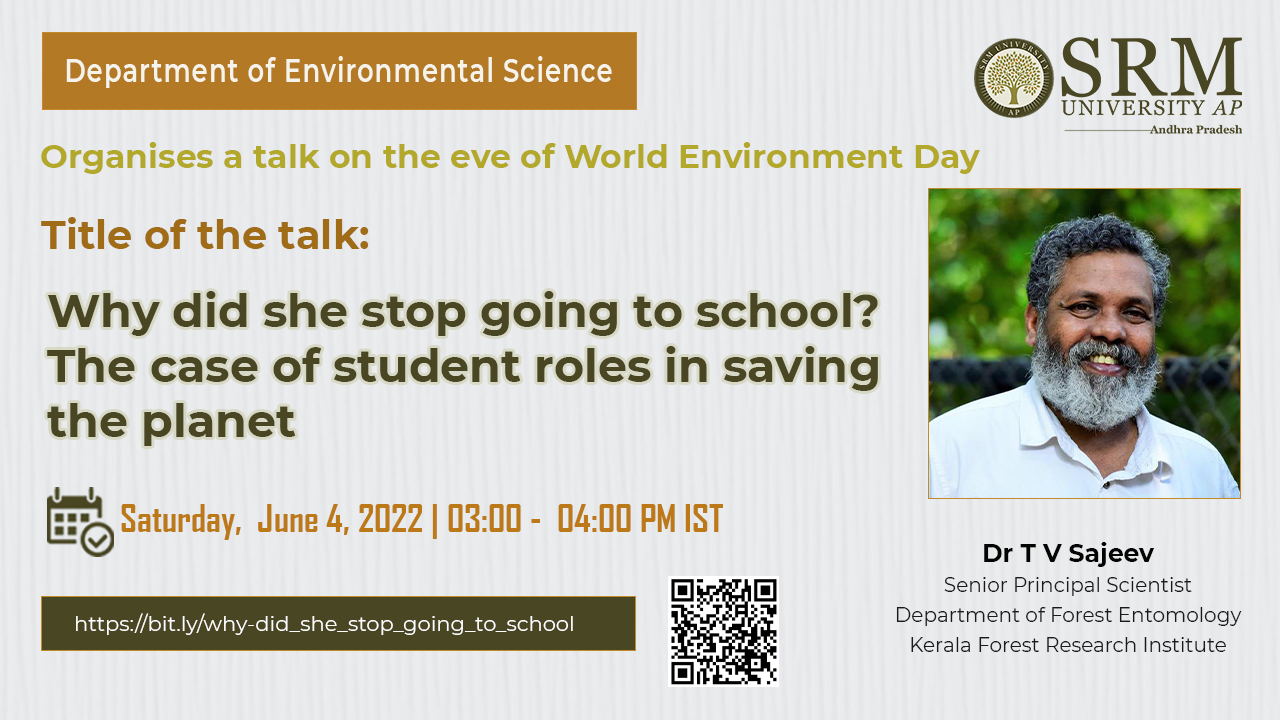 We live in a world where turning a blind eye to the air surrounding us is never an option. We are constantly reminded of our actions and their subsequent consequences on the planet. Yet many of us are in denial of the widening damages caused by us, and humanity is using the world’s resources faster than they can naturally recover. World Environment Day is here to kick you out of your comfort zone and push you to pause and reflect on what you have done so far.
We live in a world where turning a blind eye to the air surrounding us is never an option. We are constantly reminded of our actions and their subsequent consequences on the planet. Yet many of us are in denial of the widening damages caused by us, and humanity is using the world’s resources faster than they can naturally recover. World Environment Day is here to kick you out of your comfort zone and push you to pause and reflect on what you have done so far.On the eve of World Environment Day, the Department of Environmental Science is organising a webinar to discuss topics that need immediate response actions. Dr T V Sajeev, Senior Principal Scientist, Department of Forest Entomology, Kerala Forest Research Institute, will be delivering a talk on ‘Why did she stop going to school? The case of student roles in saving the planet’.
Date: June 04, 2022
Time: 3.00 pm to 4.00 pm IST
About the speaker
Dr T V Sajeev has twenty years of service as a scientist in KFRI and twenty-eight years of research experience. He has a PhD in Environmental Sciences from CUSAT. His focused areas of research are landscape fragmentation, population dynamics of insects, political ecology, biological control, and management of alien species. Currently, he coordinates a Tree Health Helpline Desk in KFRI to benefit forest tree farmers in Kerala. He has also secured a patent for the development of a biopesticide.
World Environment Day 2022 urges you to celebrate planet Earth through collective transformative actions. Let’s undo the damages we caused! Come listen to what our #OnlyOneEarth has to say.
Continue reading → - Hatchlab incubates student venture Amruthik Private Ltd June 1, 2022
Empowering and Enabling startup entrepreneurs
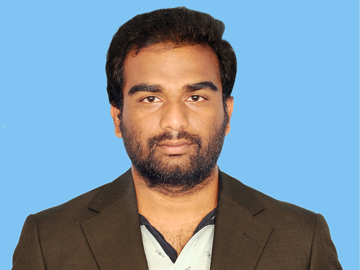 A personal incident motivated Jithin Peram, final year Computer Science Engineering student, to start Amruthik Pvt. Ltd, a company which supplies customised food to various hospitals based on the specific needs of the patients. Various doctors and hospitals have appreciated this customisation of food as per the need. Patients are satisfied as they do not have to take the generic food given by the hospital canteen now. Instead, they have the option to have a very specific diet prescribed by certified dieticians.
A personal incident motivated Jithin Peram, final year Computer Science Engineering student, to start Amruthik Pvt. Ltd, a company which supplies customised food to various hospitals based on the specific needs of the patients. Various doctors and hospitals have appreciated this customisation of food as per the need. Patients are satisfied as they do not have to take the generic food given by the hospital canteen now. Instead, they have the option to have a very specific diet prescribed by certified dieticians.The motivation behind the launch of Amruthik is quite inspirational. Jithin’s grandfather passed away due to corona. While his grandfather was suffering with Covid-19 and was admitted in hospital, Jithin was preparing for viva practicals. On hearing the news, he was shattered and it struck him how quickly everything can change around us. Since Jithin was not able to do small things such as taking lunch to his grandfather or standing next to him for moral support; With Amruthik, Jithin dreams of being there for people who need moral support and care in their hospital beds “This makes me happy, and I believe this kind of support is something everyone deserves”, says Jithin on a happy note.
Five years from now, Jithin envisions himself supporting, helping and standing by millions of people who need such services. He believes in putting smiles on faces and wants to see the impressive growth of his company.
Let’s see what Jithin says
As an engineering student, I would have never known the opportunities I have, even with the idea to build my company I would have been lost without proper guidance The Hatchlab Research Centre has given me guidance and a foundation that I can rely upon building my company.
I am thankful for the immense support I got from the faculty and the guidance provided by SRM AP, I especially thank Mr Udayan Bakshi for mentoring me and sharing his experiences with me.
Continue reading → - Ultra-stable perovskite nanocrystals for light-emitting applications June 1, 2022

Cesium lead halide perovskite nanocrystals (PNCs) belong to the flourishing research area in the field of photovoltaic and optoelectronic applications because of their excellent optical and electronic properties. Mainly, Cesium lead bromide (CsPbBr3) NCs with bright green photoluminescence (PL) and narrow full-width at half-maximum (FWHM) of <25 nm are the most desirable for television displays and green-emitting LEDs. However, challenges with respect to CsPbBr3 PNCs‘ stability, limit their usage in practical applications. The recent findings of Dr Nimai Mishra and his research team assert that surface passivation with an additional ligand could be an excellent, easy, and facile approach to enhancing the photoluminescence and stability of PNCs.
Dr Nimai Mishra, Assistant Professor, Department of Chemistry, along with his research group comprising of students pursuing PhD under him, Dr V G Vasavi Dutt, Mr Syed Akhil, Mr Rahul Singh, and Mr Manoj Palabathuni have published their research article titled “Year-Long Stability and Near-Unity Photoluminescence Quantum Yield of CsPbBr3 Perovskite Nanocrystals by Benzoic Acid Post-treatment“ in The Journal of Physical Chemistry C (A Q1 journal published by ‘The American Chemical Society’) having an impact factor of ~4.2.
In this article, the research group addresses the stability issues of green-emitting CsPbBr3 PNCs with simple post-treatment using benzoic acid (BA). A remarkable improvement in PLQY from 69.8% to 97% (near unity) was observed in benzoic acid-treated CsPbBr3 PNCs. The effective surface passivation by benzoic acid is also apparent from PL decay profiles of BA-CsPbBr3 PNCs. The long-term ambient stability and stability against ethanol of BA-CsPbBr3 PNCs are also well presented in the research. The PL intensity of untreated CsPbBr3 PNCs is completely lost within five months since the synthesis date, while ̴ 65% of initial PL intensity is preserved for BA-CsPbBr3 PNCs even after one year.
Furthermore, BA-CsPbBr3 PNCs exhibits excellent photo-stability where 36% of PL is retained while PL is completely quenched when the PNCs are exposed to 24 hours of continuous UV irradiation. Importantly, BA-CsPbBr3 PNCs show excellent stability against ethanol treatment as well. Finally, green, emitting diodes using BA-CsPbBr3 PNCs are fabricated by drop-casting NCs onto blue-emitting LED lights. Thus a simple benzoic acid posttreatment further presents the scope of use of these materials display technologies.
- Metaheuristics attribute selection model for efficient diagnosis of chronic disorders May 31, 2022
 The technological advancements in the medical domain have aided in the effective collection of data such as personal information, clinical history, and disease symptoms of patients. However, the accumulation of massive quantity of data may cause errors in the diagnosis of the disease. A chronic disease dataset may be comprised of numerous symptoms and attributes where not all of them are of equal importance in disease diagnosis. A few of those attributes may be less relevant or redundant.
The technological advancements in the medical domain have aided in the effective collection of data such as personal information, clinical history, and disease symptoms of patients. However, the accumulation of massive quantity of data may cause errors in the diagnosis of the disease. A chronic disease dataset may be comprised of numerous symptoms and attributes where not all of them are of equal importance in disease diagnosis. A few of those attributes may be less relevant or redundant.Through her research, Dr Priyanka from the Department of Computer Science and Engineering proposes metaheuristics driven attribute optimization techniques that can be implemented in optimizing chronic disease datasets to achieve optimal efficiency in disease risk prediction which can help in proper medical diagnosis. Her paper titled “A Decisive Metaheuristics Attribute Selector Enabled Combined Unsupervised-Supervised Model for Chronic Disease Risks Assessment” was published in the Q1 journal Computational Intelligence and Neuroscience.
 This research can be used to develop a decision support system to assist medical experts in the effective analysis of chronic diseases in a cost-effective manner. The system model may be used to assist medical experts in the efficient diagnosis of chronic disease risks. In future, the research study can be further enhanced to validate the model on more complex heterogeneous datasets with varying sizes and structures. Also, deep learning methods can be employed using image-based real-time datasets.
This research can be used to develop a decision support system to assist medical experts in the effective analysis of chronic diseases in a cost-effective manner. The system model may be used to assist medical experts in the efficient diagnosis of chronic disease risks. In future, the research study can be further enhanced to validate the model on more complex heterogeneous datasets with varying sizes and structures. Also, deep learning methods can be employed using image-based real-time datasets.Abstract of the Research
Advanced predictive analytics coupled with an effective attribute selection method plays a pivotal role in precise assessment of chronic disorders risks in patients. In this paper, a novel buffer enabled heuristic a Memory based Metaheuristics Attribute Selection (MMAS) model is proposed, which performs local neighbourhood search for optimizing chronic disorders data. Heart disease, breast cancer, diabetes and hepatitis are the datasets used in the research. Upon implementation of the model, a mean accuracy of 94.5% using MMAS was recorded and it dropped to 93.5% if clustering was not used. The average precision, recall and f-score metric computed were 96.05%, 94.07% and 95.06% respectively. The model also has a least latency of 0.8 sec. Thus it is demonstrated that chronic disease diagnosis can be significantly improved by heuristics based attribute selection coupled with clustering followed by classification.
Figure 1: The proposed Metaheuristics attribute selector based classification model for chronic disorders detection
Figure 2: Accuracy analysis of MMAS method on different disease datasets
Continue reading → - Interdisciplinary research and the integration of perspectives May 31, 2022
Assistant professors Dr Sabyasachi Mukhopadhyay and Dr Imran Pancha from the Department of Physics and the Department of Biological Sciences, respectively, along with Ms Ashwini Nawade, a PhD student of the Department of Physics, have developed a method to integrate plant proteins in the solid-state electronic circuits and utilize the biological functionality to produce a thin film, cost-effective photodetector. Their paper entitled Electron Transport across Phycobiliproteins Films and its’ Optoelectronic Properties has been published in the ECS Journal of Solid State Science and Technology with an Impact Factor of 2.07. It is an interdisciplinary research project between the Department of Biotechnology and Physics.
Explanation of the research
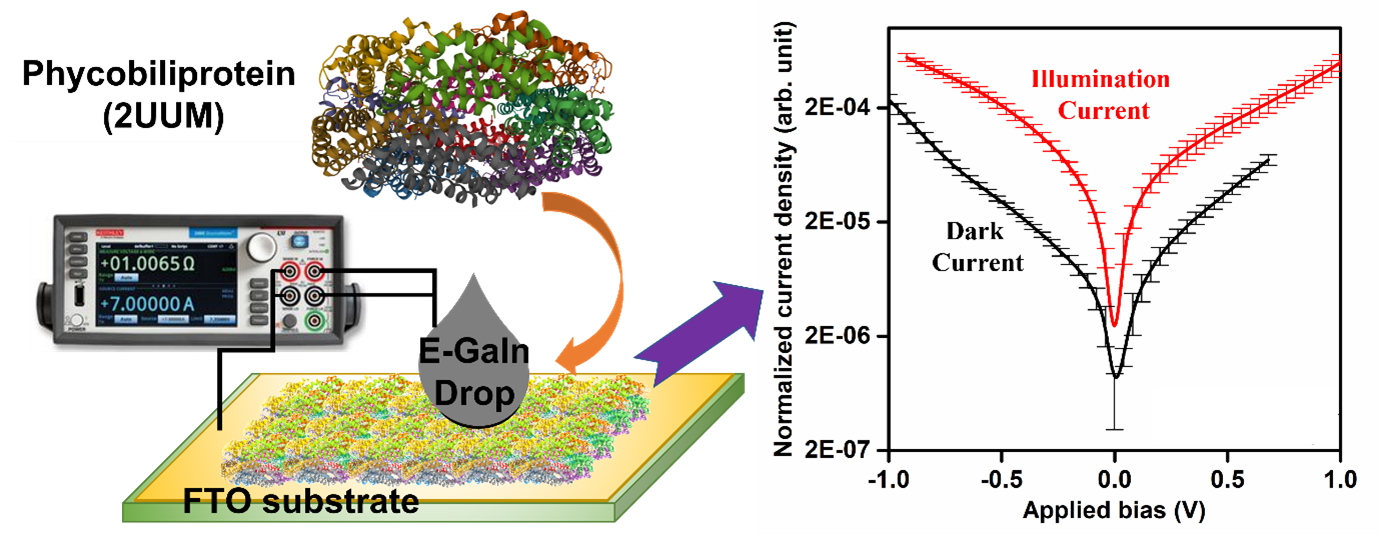 Biomolecules such as proteins, peptides being the most crucial life-forms, have an intimate relationship with various life activities for biological functions. The contemporary work with biomolecules mainly focuses on its evolving potential associated with nanoscale electronics where proteins and peptides are integrated as sensing materials. The researchers explored the optoelectronics functionality of combined proteins known as phycobiliproteins. They investigated electron transport behavior across the phycobiliproteins films under dark and white light illumination. The research affirms that the photochemical activity of the protein is more stable in a solid-state/ thin-film with tightly bonded water molecules than its presence in a buffer solution. Furthermore, the studies demonstrate that phycobiliproteins films modulate their electrical conductivity within their different conformation states. Researchers speculate that the electrical conductance variation could originate from the chemical alteration of cysteine-conjugated bilin chromophores to protein and the electrostatic environment around the chromophores.
Biomolecules such as proteins, peptides being the most crucial life-forms, have an intimate relationship with various life activities for biological functions. The contemporary work with biomolecules mainly focuses on its evolving potential associated with nanoscale electronics where proteins and peptides are integrated as sensing materials. The researchers explored the optoelectronics functionality of combined proteins known as phycobiliproteins. They investigated electron transport behavior across the phycobiliproteins films under dark and white light illumination. The research affirms that the photochemical activity of the protein is more stable in a solid-state/ thin-film with tightly bonded water molecules than its presence in a buffer solution. Furthermore, the studies demonstrate that phycobiliproteins films modulate their electrical conductivity within their different conformation states. Researchers speculate that the electrical conductance variation could originate from the chemical alteration of cysteine-conjugated bilin chromophores to protein and the electrostatic environment around the chromophores.The research explores the photochemical properties and electrical transport efficiency of phycobiliproteins (PBPs) films. In addition, it investigates the optoelectronics functionality of PBPs films by studying electron transport behavior across the protein films under a dark state and white light illumination. The researchers proposed to develop a photodetector with the protein film in the future.
Continue reading → - Liberal arts in the ever-evolving dynamics of education in India May 30, 2022
“In a properly automated and educated world, then, machines may prove to be the true humanizing influence. It may be that machines will do the work that makes life possible and that human beings will do all the other things that make life pleasant and worthwhile.”
― Isaac Asimov
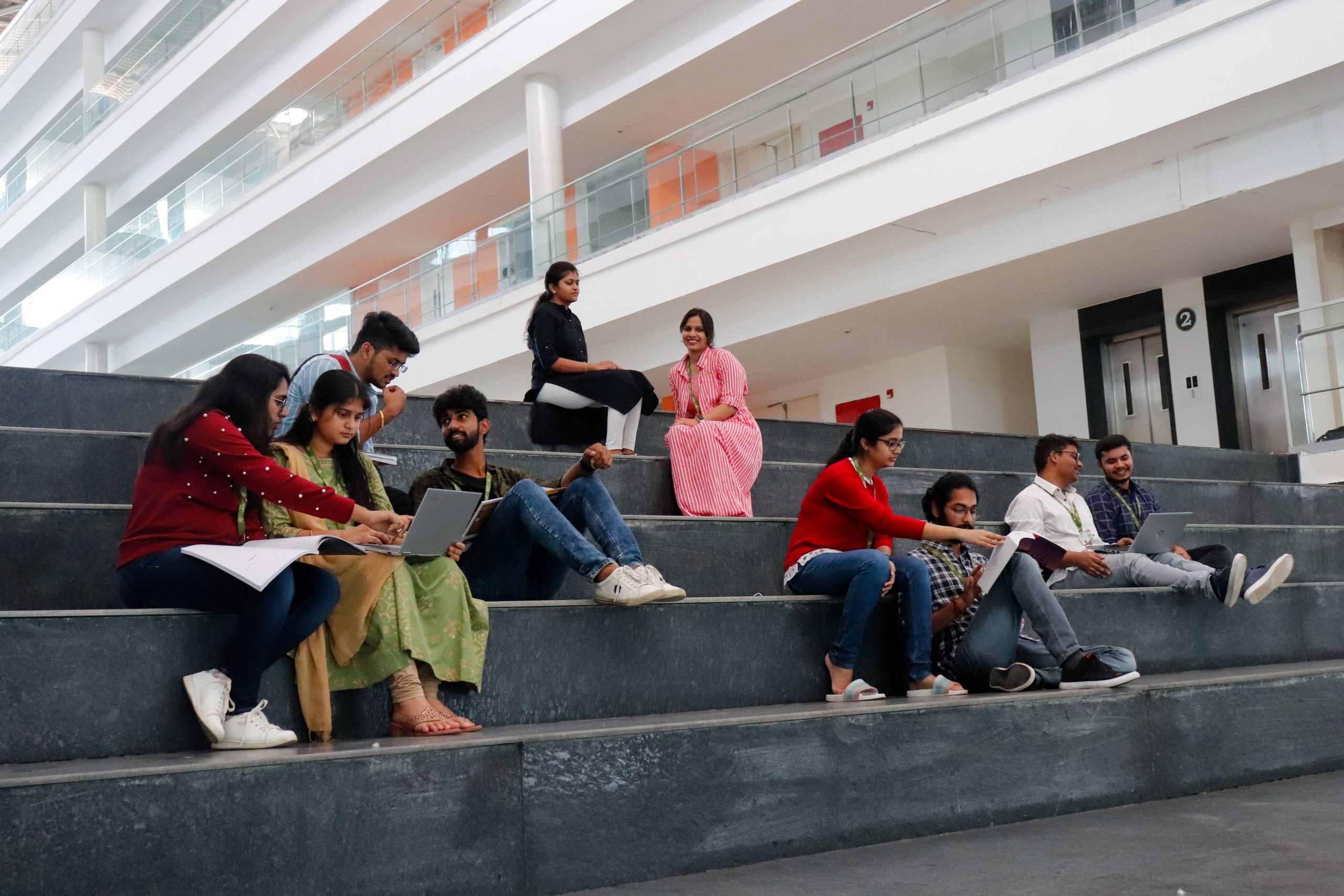 The urge to get exposed to a more diversified learning approach is understandable. Choosing a major that can help develop essential life skills while gaining a broader world perspective can be a great stride in your career. Liberal arts have always been an underrated field of study with numerous unexplored scopes. However, there is a shift in the air since the increasingly evolving world demands the production of skilled professionals with a knack for critical thinking. The trend is gradually spreading in the Indian educational scenario too.
The urge to get exposed to a more diversified learning approach is understandable. Choosing a major that can help develop essential life skills while gaining a broader world perspective can be a great stride in your career. Liberal arts have always been an underrated field of study with numerous unexplored scopes. However, there is a shift in the air since the increasingly evolving world demands the production of skilled professionals with a knack for critical thinking. The trend is gradually spreading in the Indian educational scenario too.India’s National Education Policy 2020 holds a greater emphasis on Liberal arts education. It envisions the holistic development of individuals through multidisciplinary, interdisciplinary, and transdisciplinary learning approaches. It insists on the need for higher education institutes to become multidisciplinary by 2040. De-compartmentalising the educational sector by breaking the rigid barrier between professional and liberal education is one of its major agendas. Educational structures in India are thus getting more flexible while contemplating the future of Liberal arts education. The rapidly changing employment landscape and the forthcoming industrial revolution clearly imply the extreme relevance of Liberal arts education. This calls the world’s attention towards the broader aspects of the stream of Liberal arts.
The stream of Liberal arts
The term liberal arts have roots in the classical Greek concept of a diversified education that focuses on the intellectual cultivation of the mind. The education of the Greeks in those days included different areas ranging from grammar to geometry and music. Liberal arts in the present day offer a wide range of majors and minors. These options fall into the more significant categories of humanities, social sciences, and natural sciences. Liberal arts education evokes the ability to analyse socio-political, economic, and environmental problems while being contemplative and creative. These abilities are highly relevant in current social circumstances, especially in India.
Liberal arts in the era of uncertainties
In an age that keeps updating itself, the fear of getting outdated is real. Living in a world constantly exposed to digitization, outsourcing, automating, etc., will demand fierce competence from the jobseekers. What matters is not what you learned over the years but how you learned all those things. The chances of the things you learned getting outdated are higher, but not how you perceived that knowledge.
Liberal arts as a learning subject becomes highly relevant in this scenario. Students from a liberal arts background will have much more to contribute to the ever-advancing society than the students from other streams. Liberal arts nurture the abilities of problem-solving and critical thinking. It trains the learner to think out of the box and develop original solutions.
Why Liberal arts
Liberal arts majors have the privilege of entering varying career paths due to the holistic approach the learning process holds. The possibilities are never limited. The discipline of liberal arts targets to provide a general idea regarding the subject matter and trains to think critically. The skills they earn are not restricted to a specific technical profession. Writing, critical thinking, and research skills are continuously refined through exposure to various subject matters. The job market offers opportunities for liberal arts students in science, technology, engineering, business, and many other fields. Every mainstream working ecosystem will require the input of a liberal arts major.
Advantages of pursuing a liberal arts course
Democratised educational process
Modern liberal arts education is armed with a curriculum that promotes breadth as well as the depth of knowledge. The curriculum is sufficiently flexible and gives prominence to the student’s choice. They get to play a significant role in shaping their program. This facilitates the democratisation of the educational process.
Diverse disciplines and broader perspectives
Liberal arts education provides exposure to diverse disciplines of study, which makes the learner capable of gaining a broader perspective of the field they prefer. A positive mindset, readiness to look at the world with enthusiasm, and innovative learning strategies will benefit any organization.
Thinking capacity and expanded worldview
Obtaining knowledge will help the learner gain skills in a particular area, but it also helps develop thinking capacity. Liberal arts education makes sure to guard the learners with an ability to understand and widen their knowledge limits. It nurtures the enthusiasm of the learner. This, in turn, helps to adjust the lens with which they view the world around them.
Different thinking processes
Liberal arts education lets you understand the importance of different thinking processes in every learning environment. Be it creative, analytical, or critical, a Liberal arts major knows when and how to assert these thinking processes. Challenging the preconceived notions and showing the courage not to follow the crowd is a remarkable impact liberal arts education has on the learner. This is a much-needed quality an individual should aspire to master.
Flexibility
A liberal arts student knows how to build skills based on the broader foundational knowledge. Thus, they are very flexible in acquiring new knowledge and establishing needed skills. This will help them not settle down for one specific job for an entire lifetime.
Soft skills
Every industry needs individuals with skills that are in high demand. Some of them are effective communication, critical thinking, problem-solving, and leadership qualities. Liberal arts education prepares the students to attain these qualities.
Socially responsible learner
Liberal arts don’t focus on a specialised subject. It gives a vast knowledge and allows the learner to develop creative paths to resolve social challenges exposed to them.
Opportunity to explore and experiment
Innovative ideas, concepts, and unique experiences are always there in the vicinity of the learner. The advantages of community-based learning and peer-reviewed research are accessible to the learner. This allows them to explore and experiment with the knowledge they have.
Lifelong learning
Processing the information and thinking analytically will guide the learner to think across the disciplines. This will remain a crucial life skill that could be helpful in a variety of circumstances.
Scope of liberal arts in India
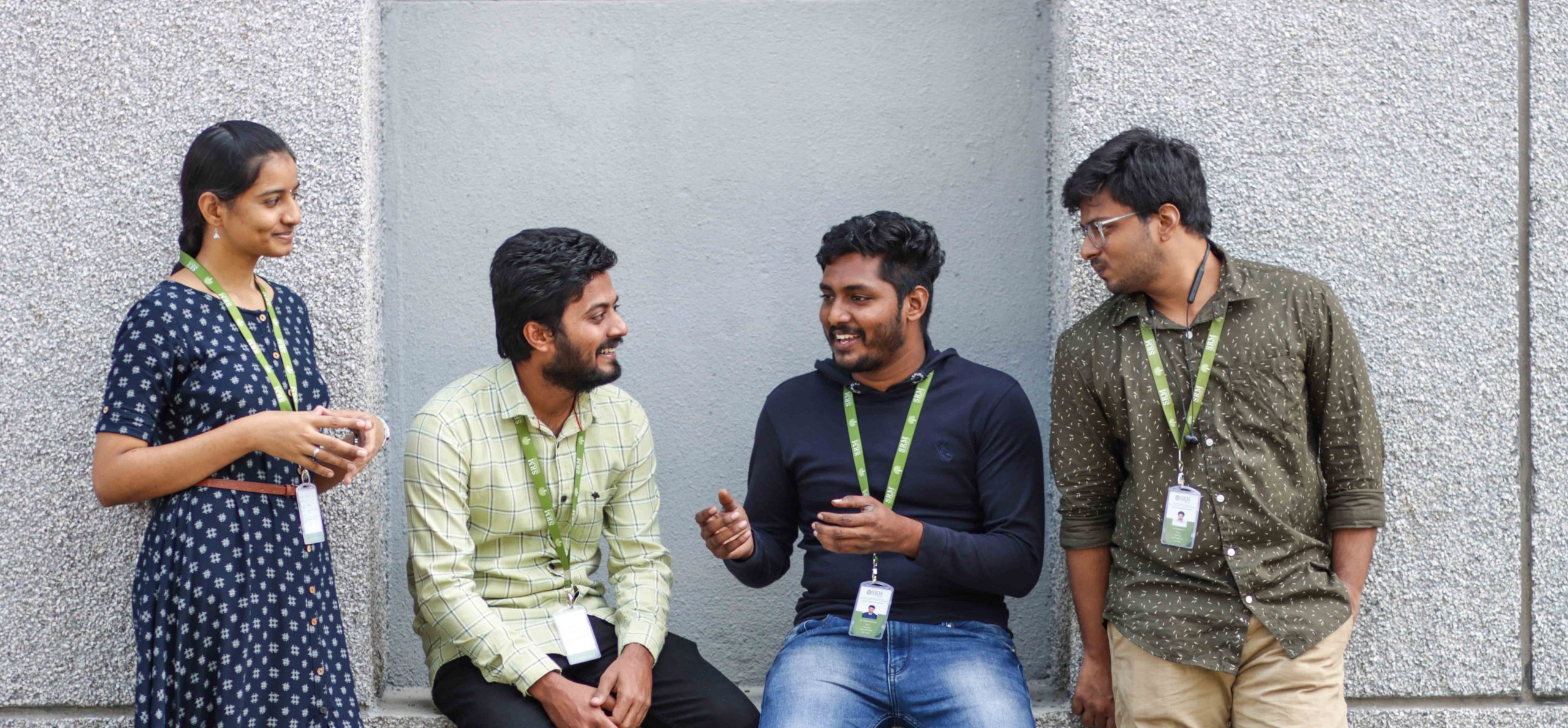 The dynamics of education is an ever-evolving process. New learning methods and diverse professions will keep popping up from time to time. With the remarkable shift that happened in the field of education, a door to a diverse set of specialized career options has opened. Not to deny the requirement for skilled professionals in the age-old job market, but the jobs will be more reasoning-oriented in the future, favoring liberal arts education. Professionals should be able to analyse the present scenario and make decisions for future changes. They should be able to think critically and be ready to absorb the constantly changing knowledge environment. This indicates the demand for liberal arts majors in the future.
The dynamics of education is an ever-evolving process. New learning methods and diverse professions will keep popping up from time to time. With the remarkable shift that happened in the field of education, a door to a diverse set of specialized career options has opened. Not to deny the requirement for skilled professionals in the age-old job market, but the jobs will be more reasoning-oriented in the future, favoring liberal arts education. Professionals should be able to analyse the present scenario and make decisions for future changes. They should be able to think critically and be ready to absorb the constantly changing knowledge environment. This indicates the demand for liberal arts majors in the future.Liberal arts is an interdisciplinary model of education preferred by many youngsters worldwide. Introducing the student community to the perks of liberal arts education can do wonders in a developing country like India. The advantages of opening multiple career options for the country’s youth are immaculate. Also, including and enhancing liberal arts in the mainstream education sector will help improve the global ranking of Indian educational institutions.
The advancing job market demands competitive advantages from individuals. They are looking for someone more human and connected. Along with passion and energy, they also need their employees to be flexible during changes and see things as they are.
The pace, scope, and strategies of this generation are entirely different from that of the previous one. Drastic changes in climate, artificial intelligence, way of approach, etc., will demand more extraordinary resourcefulness to sustain the updating. The diverse economy of India will make sure that the students interact with different individuals irrespective of gender, religion, class, etc. This will enhance their development as valuable employees, citizens, and, most importantly, human beings.
A liberal arts degree prepares one to withstand the uncertainties of a career. It can cope with the test of time since there are no expiry dates for critical thinking and problem-solving. Polished proficiency in writing, speaking, presenting, and collaborating is another trademark of liberal arts education. It is immensely helpful if viewed from the perspective of a job aspirant.
Enhanced cultural understanding is another valuable reward from liberal arts. Interdisciplinary studies play a significant role in building this broader understanding. The importance of cultural anthropology and international relations is relatively higher, especially in India. The list of career options emerging from liberal arts includes law, politics, social work, psychology, public relations, journalism, Civil services, and many more. These job sectors are considerable investments in the development of the country.
The ability to find out opportunities and take unexpected directions will be beneficial irrespective of the interests of your comfort zones. Arming the students with flexibility and imagination will prepare them to be confident in the continuously updating job markets. In an era where the information and options are available at your fingertips, it is your perspective that makes the difference.
Selecting a career that will not disappoint you is a hectic task in every individual’s life. Especially when you don’t really want to focus on one specific field of study. If you are interested in multiple subjects and ready to get exposed to a diverse study environment, Liberal arts is your answer. If you are willing to invest yourself in a more diversified approach to learning, attending a Liberal arts institution like SRM University AP might be the right choice.
Liberal arts at SRM AP
The Liberal arts education at SRM University AP provides an opportunity to pursue an interdisciplinary program across Humanities, Social Sciences, Commerce, Business Studies, and Physical sciences. Complex and increasing challenges are a part of this generation, and we are destined to face them. Multi-dimensional thought processes and problem-solving skills are the demanding qualities of an individual in a world of constant changes. A holistic education will help students to develop these necessary skills.
SRM AP has a School of Liberal Arts and Social Sciences (SLASS), allowing students to choose courses across the disciplines. The school is comprised of six departments, namely English, History, Psychology, Economics, Commerce, and Liberal arts. The Bachelor’s degree curriculum is broadly divided into Foundation courses and Majors. Students can choose their minor from a variety of subjects across the disciplines. This will help them to expand their knowledge beyond their subject of specialisation.
SRM University AP has faculties from all over India and across the world. SLASS at SRM AP offers a high-quality library that has the facilities of books or journals in print and electronic, extra-mural lectures, and colloquiums by academicians and eminent scholars. The diversity of available courses provides an unrestricted learning environment that is supported by the facilities provided by the university.
Advantages SLASS
Multidisciplinary learning ecosystem
Students are free to choose courses from diverse disciplines along with their major and foundational course.
Liberal arts; employer’s choice
The latest employment surveys state that multinational employers prefer aspirants with liberal arts degrees for their wide range of skills and ability to adapt to changes.
Learn from world-class faculties
75% of the faculty at SRM University AP holds international academic exposure or are from foreign universities, and 15% are foreign nationals.
International career opportunities
The global recognition of the courses grants a plethora of opportunities at international and postgraduation levels.
Liberal arts education will train you to learn things outside the textbook, making you confident enough to stand confidently in the face of change. In a world where machines overtake all the works of human beings, there should be more humans to look at life and think accordingly to provide much-needed responses.
Continue reading →

